×


We have detected your country as:
Please click here to go to the USA website or select another country from the dropdown list.

Thousands of pieces of fabric dating to the Roman period have been discovered in the Judean Desert. So far only two were colored with dye extracted from the murex snail. Now, a study conducted by Dr. Na‘ama Sukenik of the Israel Antiquities Authority, has exposed three other rare fabrics. These prestigious textiles, from the Wadi
Continue Reading »
{image_1}Archaeologists Eric Cline, The George Washington University (USA), and Assaf Yasur-Landau, University of Haifa, have made an exciting discovery—an ancient wine cellar in the ruins of a Canaanite palace at Tel Kabri, near the modern town of Nahariya in northern Israel.
Continue Reading »
{image_1}Since the Victorian novel King Solomon’s Mines first came out in 1885, the legendary mines of the biblical Israelite king have captured the imaginations of millions of readers. Timna Valley in the Aravah desert was long-considered to be one of the possible sites of those fabled mines. For millennia, the Timna Valley, containing thousands of mines and hundreds of smelting sites, had been mined for its rich copper ore deposits.
Continue Reading »
{image_1}An extensive archaeological excavation of the Israel Antiquities Authority at Eshta’ol (near Beit Shemesh) is producing amazing finds that provide a broad picture covering thousands of years of development of human society. The finds range from the period when man first started to domesticate plants and animals, instead of searching for them in the wild, until the period when we see the beginnings of proper urban planning.
Continue Reading »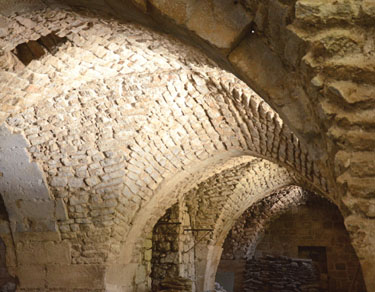
{image_1}Part of an enormous structure dating to the Crusader period (AD 1099–1291) has currently been revealed to the public. The building is situated in the heart of the Christian Quarter in the Old City of Jerusalem, in a region known as “Muristan” (a corruption of the Persian word for hospital). The building is similar in appearance to the Knights Halls in Akko.
Continue Reading »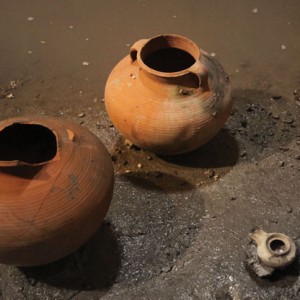
{image_1}Three complete cooking pots and a small ceramic oil lamp were uncovered inside a recently discovered small cistern in a drainage channel that runs from the Shiloah Pool in the City of David to Robinson’s Arch.
Continue Reading »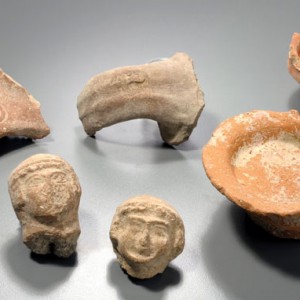
{image_1}Archaeological excavations conducted in the area of the Gihon Spring in the City of David have unearthed a layer of rich finds including thousands of broken pottery shards, clay lamps and figurines. Most intriguing is a ceramic bowl with a partially preserved inscription in ancient Hebrew. While not complete, the inscription presents archaeologists with the name of a 7th century BC figure, which resembles other names known from both the biblical and archaeological record, as well as providing a connection to the people living in Jerusalem at the end of the First Temple period.
Continue Reading »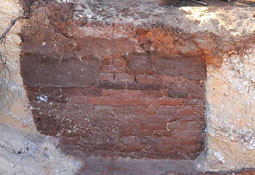
{image_1}Rare and unique discoveries were found this summer at the Tel Aviv University Institute of Archaeology excavation site in Tel Ashdod-Yam—located near the Mediterranean port city of Ashdod. Archaeologists have uncovered a system of fortifications which date back to the 8th century BC, the remains of buildings, as well as coins and weights from the Hellenistic period.
Continue Reading »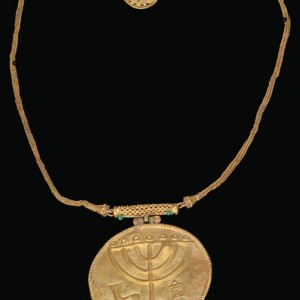
{image_1}In excavations at the foot of the Temple Mount, Hebrew University of Jerusalem archaeologist Dr. Eilat Mazar made a stunning discovery: two bundles of treasure containing thirty-six gold coins, gold and silver jewelry, and a gold medallion with the menorah (Temple candelabrum) symbol etched into it. Also etched into the 10-cm [3.9 in] medallion are a shofar (ram’s horn) and a Torah scroll.
Continue Reading »
{image_1}Tel Hazor is an archaeological site located in the Upper Galilee north of the Kinneret (Sea of Galilee). The latest find is part of a sphinx which has been dated to about 2500 BC. The statue is the only one anywhere in the world—including Egypt—bearing the pharaoh's name. A clear hieroglyphic inscription ties the sphinx to the Egyptian king Mycerinus, one of the builders of the Giza pyramids.
Continue Reading »All logos and trademarks in this site are property of their respective owner. All other materials are property of Bridges for Peace. Copyright © 2024.
Website Site Design by J-Town Internet Services Ltd. - Based in Jerusalem and Serving the World.